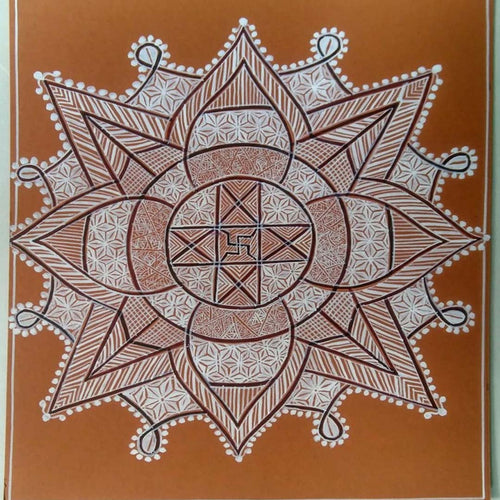 Mandana Paintings
Mandana Paintings


Mandana Mandana art is a traditional form of tribal art, mainly practiced by the Meena community in the state of Rajasthan. The word Mandana literally means to ‘put down’ or ‘decorate’ and extends to an art form often used to ornament the mud house, walls, or chulhas within the tribe, serving both decorative and ritualistic purposes.
The exact historical timeline of Mandana art is uncertain, however, it is believed to be as old as the Meena community itself, which has inhabited the region for thousands of years. Traditionally the household women used this art form to adorn their homes, especially during festivals and auspicious occasions such as Diwali, Holi, Govardhan puja, marriage, and childbirth. It was considered the symbol of auspiciousness and put to ward off the evil.
Mandana art is created using simple materials like chalk, clay, or natural pigments. Traditionally, the ground is prepared first with a mixture of cow dung and rati (a local clay). Women use their fingers, sticks, or small rudimentary brushes to create designs using lime or chalk powder. The color palette is typical with white against a backdrop of earthen colors like red or brown.
The designs are often large-scale with motifs generally inspired by nature like trees, animals, birds, and traditional symbols such as the swastika, which represents good fortune and prosperity. The design may show Ganesha, peacocks, women at work, tigers, floral motifs, etc.